As you think about building your life coach business, it’s easy to feel overwhelmed by all the moving parts.
Essentially, you became a life coach to help people move forward—not to get stuck yourself trying to figure out how to build the business behind it.
And yet, here you are: staring at a blank services page, second-guessing your pricing, or wondering if anyone will even click “book now.”
Maybe you’ve taken a certification course, started posting on Instagram, or offered a few free sessions—but turning that into a real business?
That’s where things get murky.
You’re not alone.
A study by the International Coaching Federation (ICF) found that while the coaching industry continues to grow rapidly—estimated at $4.56 billion globally—many life coaches still struggle with inconsistent income, unclear offers, and the tech overwhelm of building their digital presence.
But here’s the thing: most successful life coaches don’t succeed because they’re the most certified or the most Instagram-savvy.
They succeed because they know how to clearly communicate the transformation they offer, price their services with confidence, and guide potential clients through a smooth online journey—starting with a coaching website that actually converts.
Whether you’re just starting out or restructuring your current setup, this guide will walk you through the core elements of a thriving life coach business: how to define your niche, create and price irresistible packages, deliver a seamless client experience, and use your website as the central hub for it all.
Let’s get your coaching business out of your head—and into the hands of the people who need it most.
Define Your Niche & Coaching Philosophy

Before you create packages or build a website, you need clarity—and not just on what you do, but who you do it for, and why.
In a saturated coaching space, generic messaging like “I help people live their best life” won’t cut through the noise. What makes a business magnetic is specificity: knowing who you’re helping, what transformation you’re offering, and what makes your approach different.
Start with these prompts:
- Who is your ideal client? (Think: a stressed-out corporate professional, a new parent navigating identity shifts, a recent retiree seeking purpose.)
- What specific problem are they facing—and how are they feeling about it?
- What personal experiences, methods, or philosophies do you bring that create transformation?
Psychological insight tip: Studies show people are more likely to engage with services that mirror their specific identity or stage in life.
That’s why niche clarity matters not just for you—but for your client’s trust and buy-in.
How this shows up on your website:
- A homepage headline that speaks directly to your niche’s struggle or aspiration
- An About Page that shares your journey and coaching philosophy with emotional resonance
- Clear service descriptions tailored to their needs and language
Think of your niche and philosophy as the foundation of your business and your website as the doorway that invites the right people in.
Create Coaching Packages That Sell (and Serve)
Coaching is a transformational service—but transformation takes time.
Instead of offering one-off sessions that leave people unsure of the next step, your business will grow more sustainably when you create packages that are outcome-oriented and time-bound.
Your coaching packages should be:
- Specific – what outcome will the client walk away with?
- Time-bound – over how many weeks or months?
- Structured – include what’s included: 1:1 calls, email support, homework, resources
Example:
“Clarity to Confidence: A 6-week 1:1 program for new life coaches who want to define their niche, design their first offer, and feel confident charging for their work.”
Don’t worry if you don’t have it all figured out yet—your first package is a prototype. Refine it over time based on client feedback.
How this shows up on your website:
- A dedicated Services or Work With Me page that outlines each package clearly
- Buttons to book a discovery call or apply to work with you
- Optional: include pricing, FAQs, and what makes your approach unique
Bonus Tip:
Bundle in digital materials—like a self-reflection journal or a values workbook—that add value and set you apart from other coaches offering similar services.
Next up, we’ll talk pricing—how to set your rates with confidence and communicate them in a way that feels aligned and professional.
Price Your Coaching Services with Confidence (and Strategy)

Pricing can be one of the most uncomfortable parts of building a life coach business—especially if your work feels personal, intuitive, or heart-led. You might worry about charging “too much,” fear being seen as pushy, or simply not know where to start.
But here’s the truth: pricing is not just about numbers—it’s about clarity, energy, and positioning. Done well, your pricing supports your confidence, honors your time, and communicates the value of your work to the right clients.
Let’s walk through a step-by-step process so you can leave this section with a clear and aligned pricing strategy.
Step 1: Understand the Value You Provide
Clients aren’t paying for your time—they’re paying for transformation.
Ask yourself:
- What is the before-and-after experience your coaching offers?
- What is it worth for a client to gain clarity, confidence, or relief?
- What would it cost them to stay stuck?
Reference: Behavioral psychology shows that people are more likely to invest when they perceive the risk of not taking action to be higher than the cost of the solution. (loss aversion principle, Kahneman & Tversky).
Step 2: Choose Your Pricing Model
Here are common pricing structures for life coaching:
- Per Session (e.g. $80–$200 per 60 mins):
Best for newer coaches or discovery sessions. Downside: no guaranteed commitment. - Package Pricing (e.g. $600 for 6 sessions over 6 weeks):
Helps clients commit to the process and gives structure to the relationship. - Monthly Retainer (e.g. $350/month for 2 sessions + email support):
Great for ongoing clients who need long-term support without strict endpoints. - Premium Programs (e.g. $1500+ for a 3-month transformation journey):
Ideal if you’re offering a more structured signature program with added value (workbooks, video trainings, bonus calls, etc.).
Pro Tip: Always anchor your prices in the transformation, not the time spent.
Step 3: Determine Your Base Rate (Math Meets Intuition)
Use this simple formula to get grounded:
(Monthly income goal) ÷ (available client hours) = base hourly rate
Example:
You want to earn $4,000/month. You can realistically coach 15 clients per month (at 4 sessions each, that’s 60 sessions).
$4,000 ÷ 60 = ~$67 base rate. Then factor in your experience, niche, and added value.
Now you can build packages from this base.
Before you set your rates or build your packages, take a look at how much life coaches make to set realistic and profitable income goals.
Step 4: Align with Your Energy and Market Position
It’s not just about numbers—it’s about what feels sustainable for you and how you want to be perceived.
- Do you want a high-touch, low-volume model (few clients, higher price)?
- Or a lower-touch, scalable model (more clients or group programs, moderate price)?
- Does your pricing reflect how you want to show up—and attract your dream clients?
If you underprice, you risk burnout and send mixed signals about your confidence. If you overprice without clarity or positioning, you may repel aligned clients.
Step 5: Communicate Your Pricing Clearly on Your Website
Whether or not you list prices publicly is up to you—but your website should:
- Show the value of what’s included
- Guide the visitor toward action (book a discovery call, apply, etc.)
- Be transparent where it builds trust (especially for lower-priced or group offers)
Bonus Tip: Use tiered options (e.g., “Clarity Call,” “Deep Dive Package,” “3-Month Mentorship”) to give clients flexibility while encouraging higher-commitment offers.
Learning from Brooke Castillo
Take Brooke Castillo of The Life Coach School, for example.
She turned her signature coaching model into a multi-million-dollar business, starting with one-on-one coaching and evolving into group programs and digital courses.

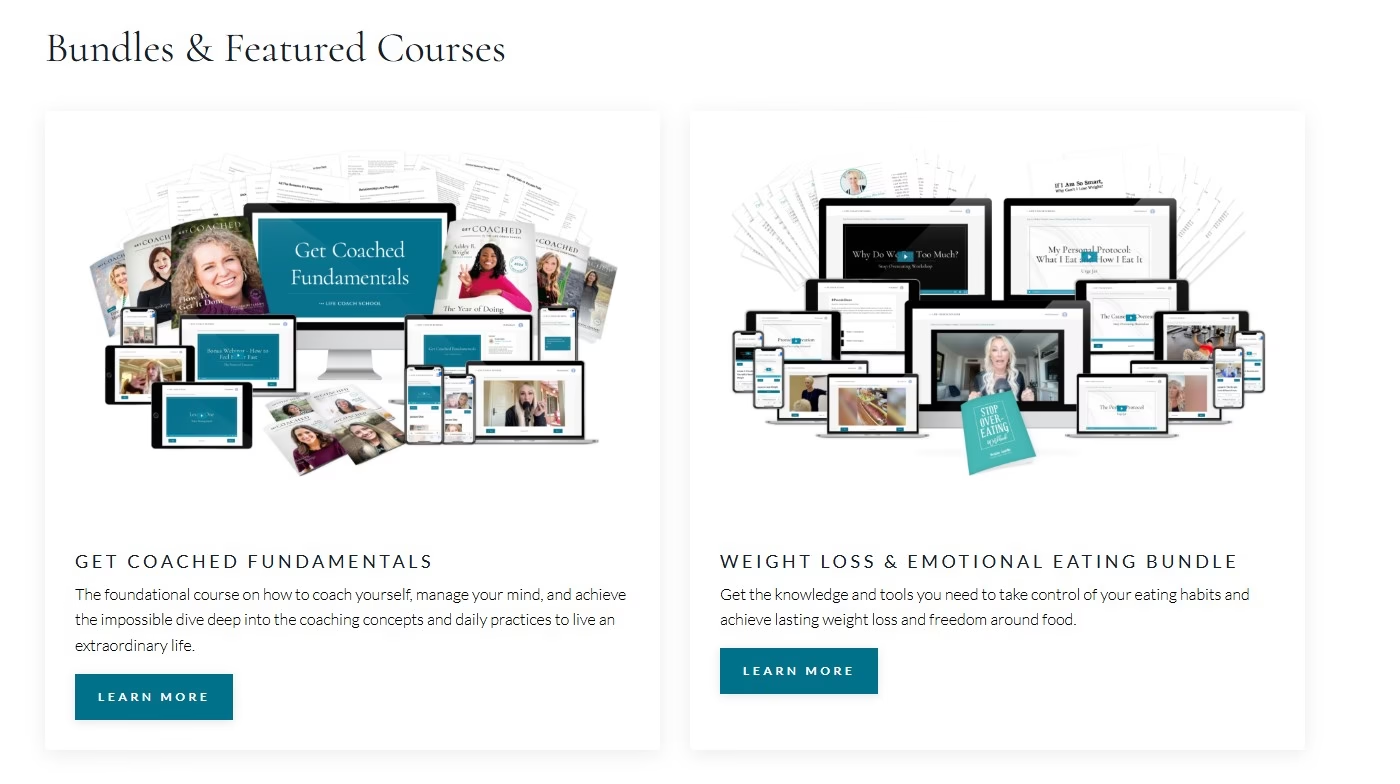
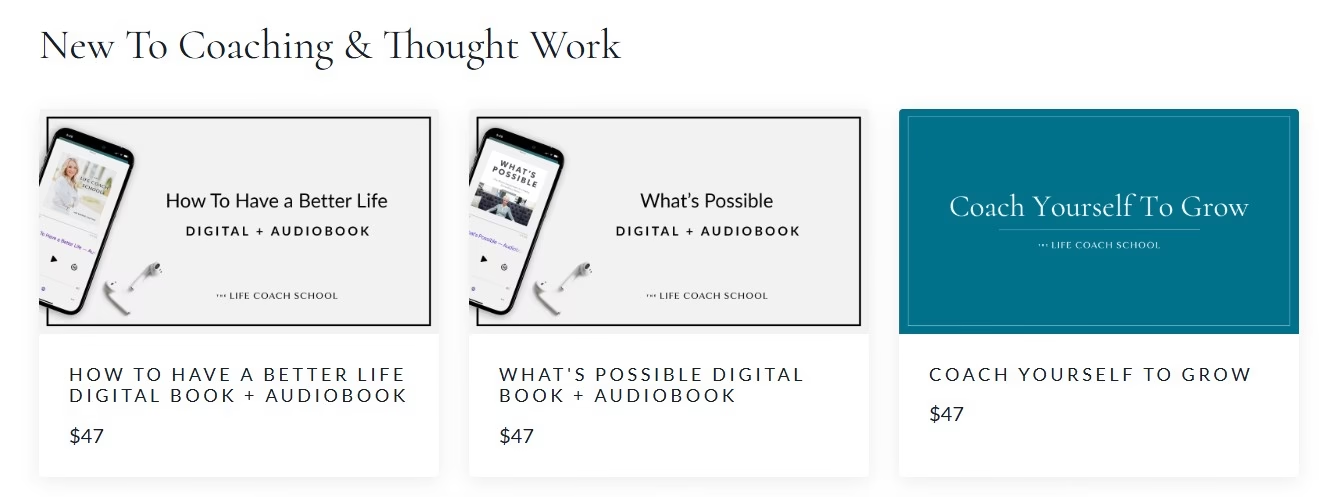
At one point, she openly shared charging $297 per 45-minute session for private coaching—and her pricing increased as her demand and expertise grew.
Today, her business runs a group coaching membership at $297/month and certification programs priced at $21,000+, proving that with clarity and confidence in your results, premium pricing is not only possible—it’s sustainable.
Final Pricing Checklist
By the time you leave this section, you should:
- Know your income goal and how many clients you want to serve
- Have a working base rate and package ideas
- Understand how to align your prices with your positioning
- Know how to present your prices (or the pathway to them) on your site
Deliver a Client Experience That Creates Lasting Impact
Once a client says yes, your real work begins—not just in coaching, but in how you guide them through the full experience of working with you. A seamless, thoughtful process builds trust, encourages referrals, and makes clients feel held from start to finish.
✨ Your client experience should include:
- Onboarding: Send a welcome email, intake form, and outline of what to expect
- Session flow: Use tools like Zoom, Notion, or client portals for structure and session notes
- Between sessions: Offer support via email, voice notes, or shared documents (with clear boundaries)
- Offboarding: Close with reflection prompts, a final check-in, and a testimonial request
🛠 How your website helps:
- Host your intake forms and pre-session questionnaires
- Offer a client login or resource portal
- Set up automated confirmation emails via booking tools
- Make it easy to collect feedback and testimonials after the program ends
A client-centered system not only feels professional—it increases retention and referrals because people remember how you made them feel outside the sessions just as much as within them.
Build a Website That Supports (and Grows) Your Business
Let’s be honest—most life coaches get stuck here.
You’re not a web designer, and you don’t want to spend weeks building something that still doesn’t feel “you.”
The good news? Your website doesn’t need to be fancy. It just needs to be functional, aligned, and strategic.
At a minimum, your coaching website should have:
- A clear homepage that speaks to your ideal client’s needs
- An About page that builds trust through your story and values
- A Services page outlining your packages and how to work with you
- A Booking or Contact page to start the relationship
- An Email opt-in (e.g. free resource, quiz, or discovery call)
Bonus sections:
- A Testimonials page for social proof
- A Blog or Resources section for content marketing and SEO
- A Sales page for your signature program or lead magnet funnel
Remember: Your website is your digital HQ. Every Instagram post, podcast appearance, or referral should lead back to a place where someone can learn more, connect, and act.
Build Your Coaching Website in Minutes
You don’t need to be a designer (or lose a weekend to tutorials) to launch a beautiful, functional website. With TheFlowOps, creating your coaching site is as easy as:
- Login to Your Dashboard
Sign up for free and access your intuitive builder in seconds. - Choose a Wellness-Aligned Template
Pick from curated designs made specifically for coaches, healers, and wellness entrepreneurs. Whether your style is bold and modern or calm and minimalist, there’s a template that fits your brand energy.

3. Populate Your Info
Customize your website effortlessly—just add your headline, bio, packages, and booking link through an intuitive setup that feels like filling out a form. No guesswork, just clear steps to make it truly yours.

4. Edit the Site Styles
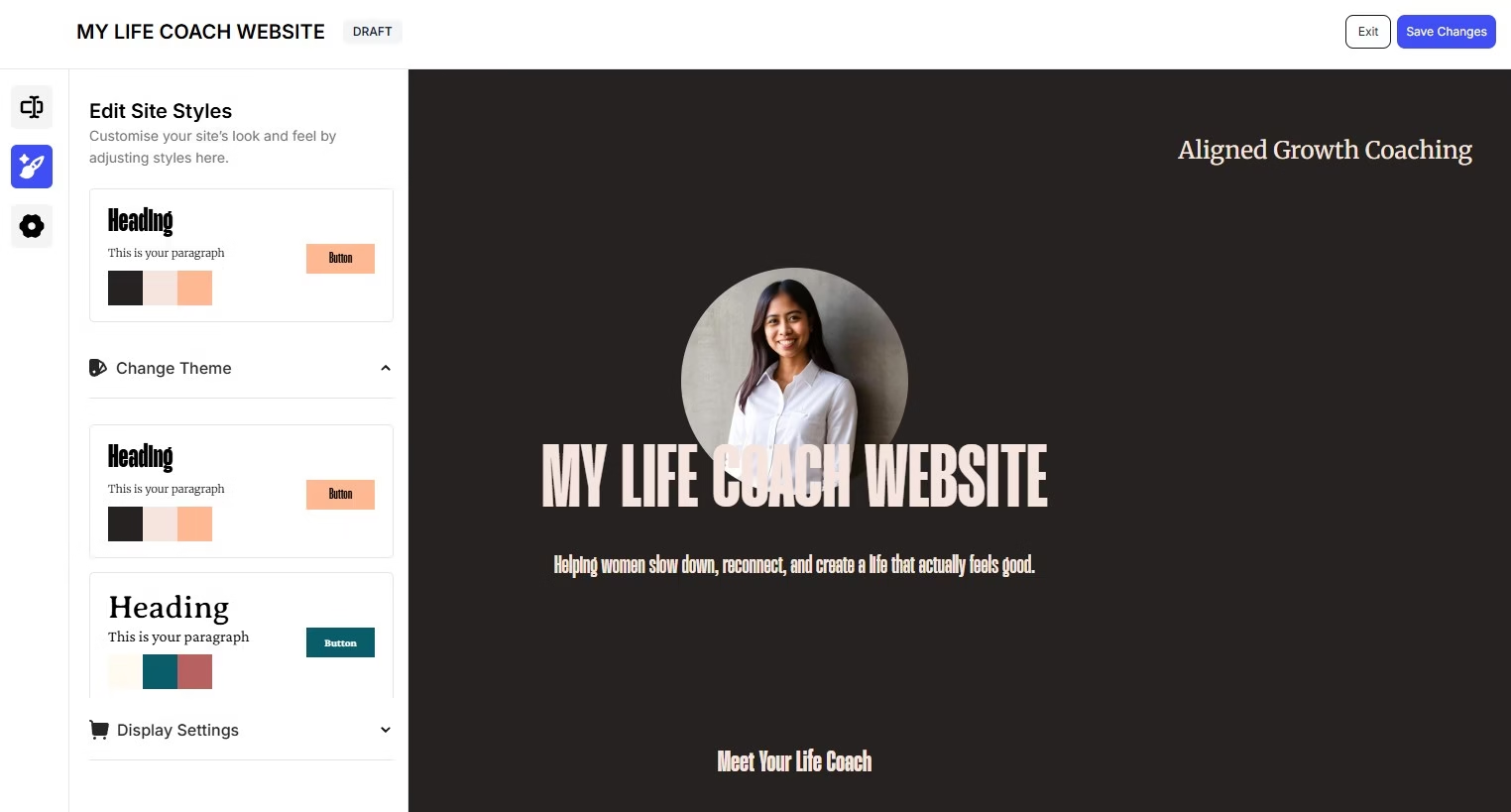
5. Save Changes + Hit Publish
Your coaching website is now live and ready to support your business growth—from discovery calls to digital products.For premium templates, you will be prompted to setup your payment info before publishing.
Make Booking Group Coaching Sessions Effortless with TheFlowOps Scheduling Widget
If you’re offering group coaching programs—or planning to—it’s important to make the sign-up and scheduling process as smooth as possible. A clunky booking experience can turn away even the most excited potential client.
That’s where the TheFlowOps scheduling widget comes in.
Instead of juggling third-party tools or spreadsheets, you can:
- Set up recurring group sessions with limited spots
- Automate reminders and confirmations to reduce no-shows
- Embed the widget directly into your program sales page or client portal
- Allow clients to book and pay—all in one seamless flow
Think of it as your virtual studio front desk, always open and always organized.
Whether you’re launching a 6-week coaching circle, monthly group Q&A, or seasonal mastermind, TheFlowOps gives you the tools to manage it like a pro—no extra software or tech stack required.
Try It on Your Own Site
Want to see how it works? Log in to TheFlowOps, select “Group Session Booking,” and set your first time slot in just a few clicks.
Explore the scheduling widget →
Why Discovery Calls Are Key to Booking Clients (and Building Trust)
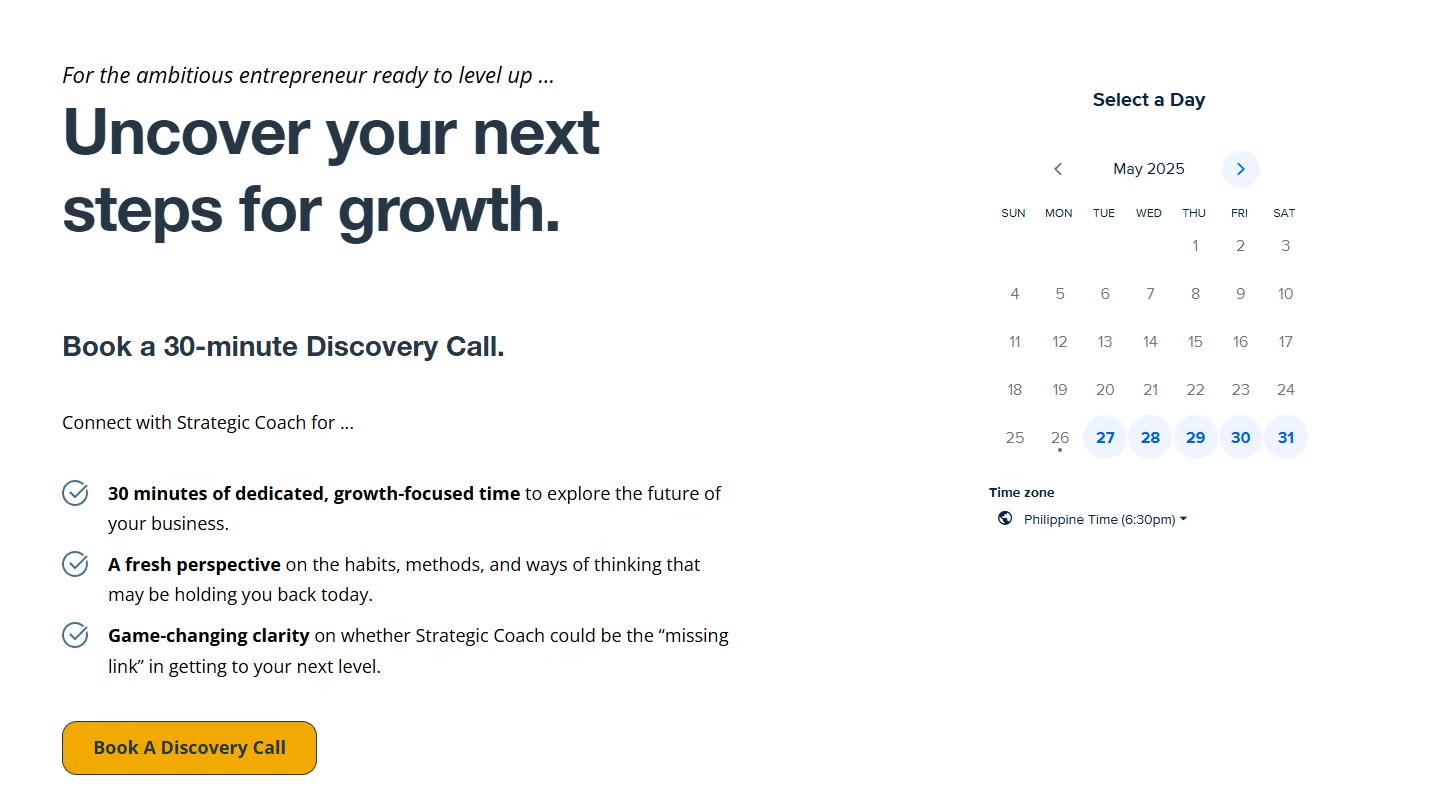
Once your packages and pricing are in place, the next step is helping potential clients confidently say yes. One of the most effective ways to do this? Offer a discovery call.
Also called a clarity call or intro session, a discovery call is a free, no-pressure conversation where a potential client can:
- Share what they’re currently navigating
- Ask questions about your approach
- Feel out the energy of working with you
- Decide if coaching is the right fit—and if you’re the right coach
It’s not a sales pitch—it’s a trust-building bridge.
Marie Forleo, creator of B-School and a prominent life coach-turned-entrepreneur, has long emphasized the importance of building genuine connection before selling anything.
In early versions of her coaching programs, she personally offered free discovery calls to better understand what her audience needed—and to ensure her offers aligned with their desires. She still teaches that businesses thrive when you lead with curiosity, listening, and service.
“Clarity comes from engagement, not thought.” – Marie Forleo
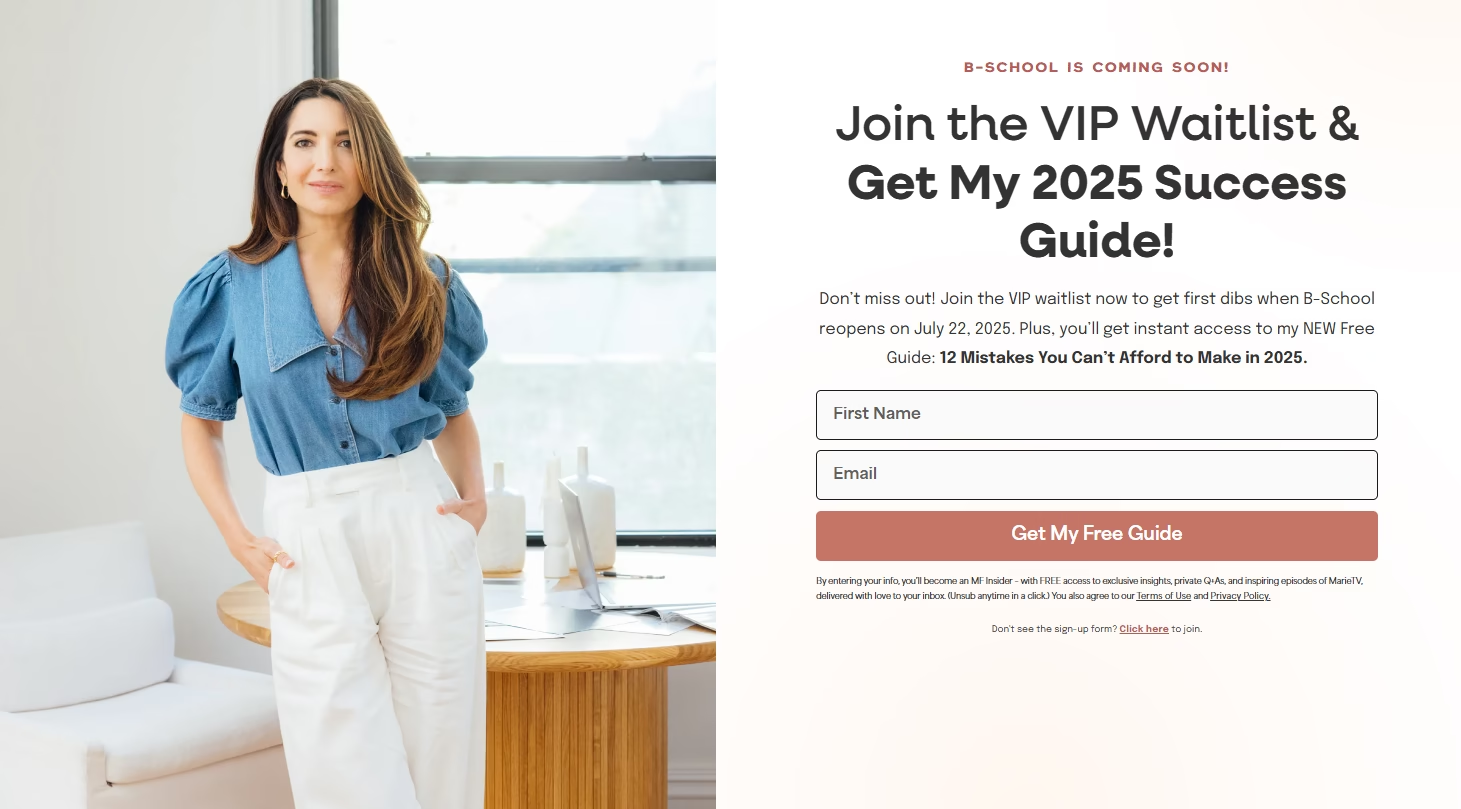
🧭 How to Make Discovery Calls Work for Your Business
- Embed a “Book a Free Call” button on your website, ideally on your homepage and services page
- Use a scheduling tool (like the one built into TheFlowOps or external tools like Calendly or TidyCal)
- Limit discovery calls to 20–30 minutes to keep them focused
- Have a simple pre-call form to help both of you show up prepared
- End the call with clarity—whether that’s a next step or simply a kind “not the right fit”
Discovery calls aren’t just about getting clients. They’re about starting relationships from a place of alignment and care.
Market Your Life Coach Business (Without Burning Out)
Marketing doesn’t have to mean being everywhere all the time. In fact, the most successful coaches focus on consistency over complexity. Your website plays a key role in this by becoming the hub for all your efforts.
Here’s how to keep it simple:
- Drive traffic with blog posts, SEO, or Pinterest pins
- Create a lead magnet (like a mini course or journal prompt guide) and grow your email list
- Use social media to invite—not sell—and link back to your site
- Set up automations to welcome new subscribers and offer booking links or program invites
If you’ve done the work from earlier in this article—niching, packaging, pricing, and building your site—you don’t have to hustle. Your marketing simply becomes a consistent invitation to something that’s already set up to deliver.
Set the Tone with a Thoughtful Coaching Intake Form
Your website and discovery call may create the first impression, but your intake form sets the tone for the client relationship. It’s not just paperwork—it’s an opportunity to show professionalism, gather insight, and make your clients feel supported right from the start.
A well-designed intake form helps you:
- Understand your client’s goals, challenges, and mindset
- Save time by collecting key details before your first session
- Guide your coaching sessions with intention and clarity
- Establish boundaries and expectations early on
Coaches who use an intake form are more likely to deliver personalized, focused support—and clients feel seen before they even show up.
What to Include in a Great Intake Form:
- Basic info: Name, contact details, time zone
- Coaching readiness questions: “What brings you to coaching now?” or “What does success look like for you?”
- Life snapshot: Rate areas like career, health, relationships, purpose
- Values or vision prompts: “What matters most to you right now?”
- Agreement checkbox: Confirms confidentiality, expectations, and boundaries
Your Life Coach Business Doesn’t Need to Be Complicated—Just Aligned
You don’t have to have it all figured out to start. But the coaches who succeed are the ones who treat their business like a business—with structure, clarity, and a website that supports it all.
From defining your niche and pricing your services, to delivering a powerful client experience and building an online presence, every step you take is part of something bigger: your legacy of transformation.
Ready to bring your coaching business to life?
TheFlowOps Website Builder was designed specifically for coaches and wellness practitioners. With beautiful templates, built-in booking tools, and automation features that simplify your workflow, it’s everything you need to build a website that not only reflects your purpose—but grows your business with ease.
As you start putting your packages together and building your site, don’t forget to double-check for common coaching website mistakes that could cost you time and money down the line. And if you’re looking for a head start, explore our curated life coach templates designed to help you build with confidence—so you can focus on what truly matters: serving your clients and growing your business.



